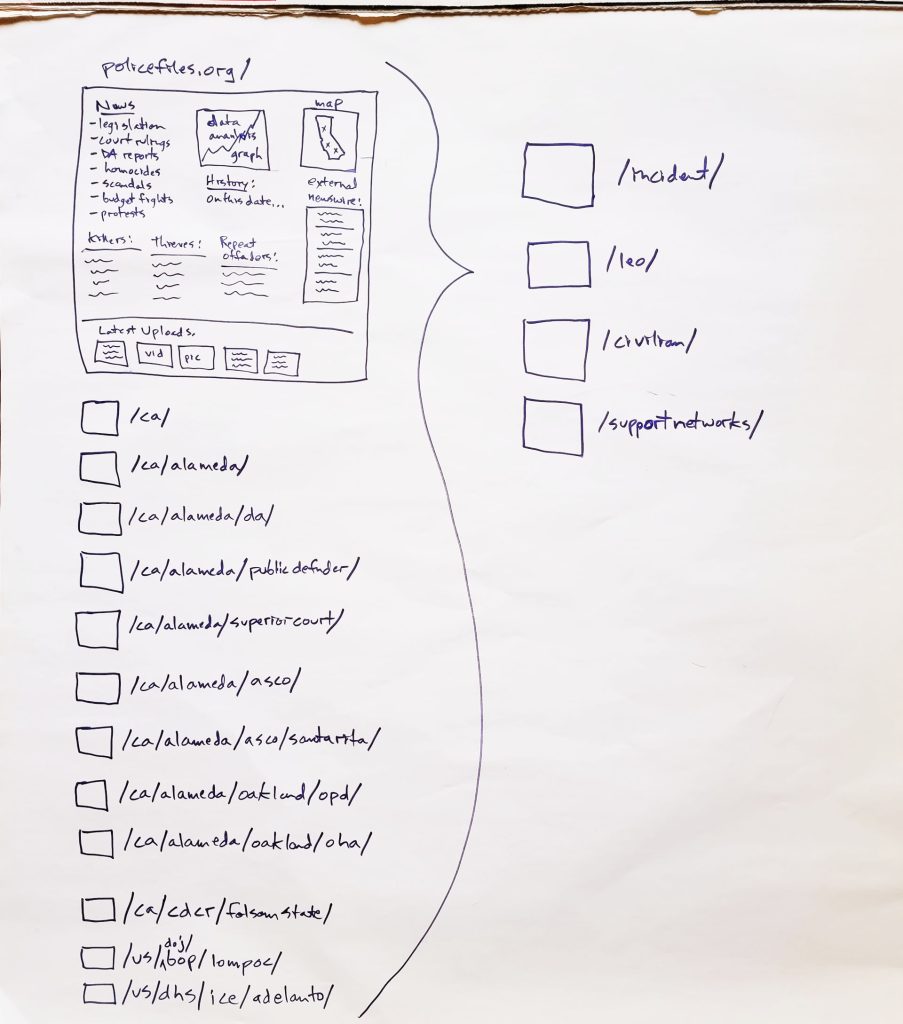After a successful round of fundraising, I’m excited to announce that work towards creating a California police accountability database has finally begun. Enough was raised to cover my full-time labor through the end of the year, with further funds anticipated. Once a working model is produced, hopefully more people will be inspired to contribute and propel the project even further into the future.
No memory holes. No blue wall of silence.
We’ve long needed a centralized hub for information on law enforcement violence and corruption throughout California, one that is easily searchable for repeat offenders, those who switch departments, and so forth, a detailed compendium of inter-related data for every agency in the state. No such resource currently exists.
There are over 700 law enforcement agencies and 100 detention facilities in California. That’s an awful lot of police power to keep track of. They’re everywhere, in places we see every day and those we’ll likely never see. Frankly, beyond what’s right in front of us, it can be overwhelming to try to hold in our heads the full scope of the damage they do. Too much slips down the memory hole as the constant deluge of abuses continues. But, now, something is going to be done about it. A publicly-accessible permanent record is being created.
Moving Forward with Realistic Expectations
It would be great to be able to promise that a comprehensive database can be constructed and filled up with every last piece of relevant data for the entire state of California in a short period of time, but it can’t. It will likely take years. And, truth be told, such an endeavor will never be fully completed, as long as law enforcement violence and corruption continues. At this point, Police Files is minimally funded for just four months.
Four months should cover initial groundwork toward the website and database, as well as planning to extend the life of the project. Perhaps the first iteration could go live within a year or so of full-time work by one person, myself. From there, by necessity, low hanging fruit in large cities will be among the first targets for data collection (Oakland, San Francisco, San José, Vallejo, Sacramento, etc) and the project will spread out from there.
Populating the database with countless terabytes of police records is a whole ‘nother matter, even if the early scope of the project is limited to a geographical region such as Northern California. A related consideration is web hosting, which will grow increasingly expensive as more and more files are uploaded for public access.
Simply put, a massive database can’t happen overnight. It’ll require the work of more than one person and greater funding.
The primary goal through the end of the year is to work toward a solid iteration of the database as a demonstration project — a working proof of concept that is actually useful — in order to attract further funding via grants and other sources, so that the data collection and web development can continue and expand over time.
Here’s what will be happening in the coming year, the nuts and bolts of it…
Organizational work:
• Network and consult with individuals and groups already doing ground-level work on police accountability issues, from activists to civil rights attorneys, from investigative journalists to affected families. Survey their thoughts on how the project can be most useful for them and the general public. This will be an ongoing dialogue.
Information Architecture:
• Synthesize feedback gathered — along with learnings gleaned from other data-centric projects — into the most efficient and useful structure possible, for inputting, searching, and displaying a wide range of police-related data.
Database and Website Development:
• Construct the complex database.
• Build out the public website which utilizes the database.
Research and Data Entry:
• Acquire bulk and granular sources of related information and create a plan for incorporating it.
• Begin to populate the database and website.
Project Growth and Funding for Sustainability:
• Develop processes to best enable activists, journalists, attorneys, researchers, data analysts, web developers, visual designers, and others to collaborate and contribute.
• Increase pool of individual donors.
• Identify large sources of funding and apply for grants to expand the project, in terms of longevity and paid support staff, as well as to cover increasing expenses such as web hosting.
Incremental Roll-Outs
As development progresses, things will be released intermittently to share what’s happening as much as possible, without holding back larger goals. You’ll see posts about web dev and data acquisitions. The idea is to bring forward something new regularly, even though most of what’s going on will be behind-the-scenes.
Besides checking back here, follow Police Files on social media for updates. And don’t forget to tell a friend.
Thank you for your support.
— David




